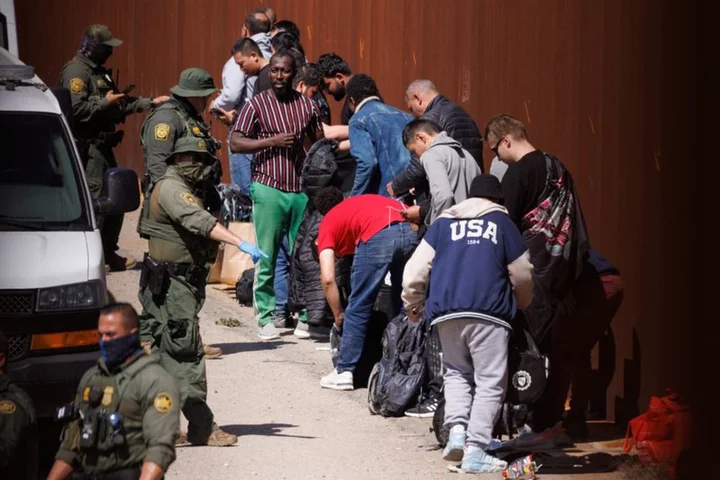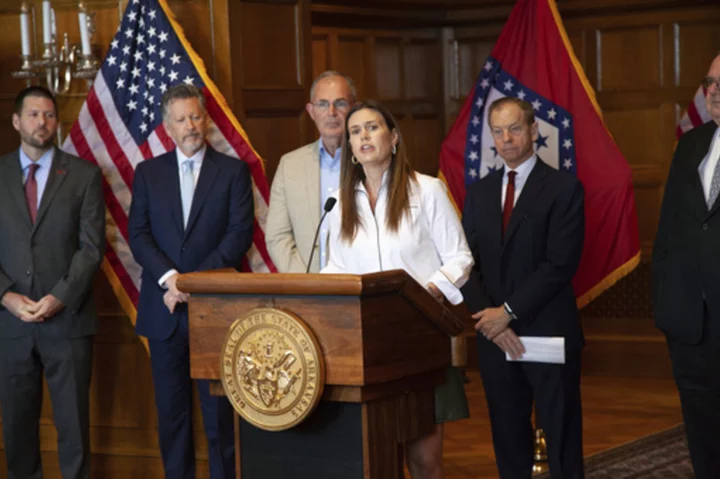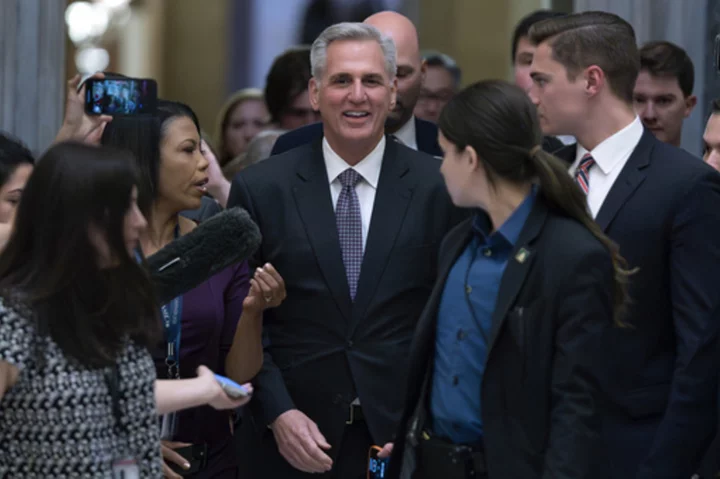By Ted Hesson
(Reuters) -The United States is set to lift COVID-19 restrictions on Thursday night that have blocked hundreds of thousands of migrants caught at the U.S.-Mexico border from seeking asylum since 2020, a move that has spurred a spike in illegal crossings and heightened political tensions.
WHAT IS TITLE 42?
The COVID restrictions, known as Title 42, were first implemented under Republican then-President Donald Trump in March 2020 at the beginning of the pandemic. At the time, the U.S. Centers for Disease Control and Prevention (CDC) said the order was needed to stem the spread of the coronavirus in crowded detention settings.
Title 42 allowed border agents to rapidly expel many migrants to Mexico, but some public health experts, Democrats and advocates criticized its health justification, saying it was part of Trump's goal of curbing legal and illegal immigration.
President Joe Biden, a Democrat, took office in 2021 vowing to reverse Trump's restrictive approach, but kept Title 42 in place and expanded it as his administration grappled with record migrant arrests at the U.S.-Mexico border.
Since its inception, migrants have been expelled more than 2.7 million times under Title 42, although the total includes many repeat crossers and Mexico has generally only accepted certain nationalities.
WHAT IS HAPPENING TODAY?
The Biden administration intends to lift Title 42 on Thursday at 11:59 p.m. EDT when the U.S. COVID public health emergency ends.
Migrants caught crossing the U.S.-Mexico border will again be able to request asylum. However, a new Biden regulation finalized this week could deny asylum for most who cross illegally.
Even with the new tougher asylum standard, U.S. border officials are preparing for a possible increase in illegal crossings, the result of pent-up demand and the perception among migrants that they will be allowed in.
The number of migrants apprehended at the border with Mexico climbed to more than 10,000 per day this week, surpassing a scenario outlined by a top U.S. border official last month.
Some migrants said they aimed to enter the U.S. before the new asylum restrictions came into force.
WHAT IS THE PLAN ONCE TITLE 42 IS GONE?
The new Biden regulation restricting asylum for migrants who cross illegally will take effect immediately after Title 42 ends.
Under the regulation, most migrants will be presumed ineligible for asylum if they passed through other nations without seeking protection elsewhere first or if they failed to use legal pathways for U.S. entry.
U.S. authorities aim to process migrants in days and swiftly deport them if they fail an initial asylum screening.
Nearly 500 U.S. Citizenship and Immigration Services (USCIS) personnel will temporarily be assigned to help with the interviews and the Pentagon will send 1,500 troops to support the Border Patrol on a temporary basis.
The new Biden regulation toughening access to asylum is expected to face legal challenges. The administration may also struggle to hold migrants at the border and quickly deport them without additional funds from Congress.
COULD U.S. COURTS OR CONGRESS KEEP TITLE 42 IN PLACE?
A last-minute legal intervention to block the Title 42 termination appears unlikely, but it remains unknown whether court battles could resume afterward.
The CDC tried in April 2022 to end Title 42, saying it was no longer needed to limit the spread of COVID-19 in light of vaccines and other medical advances.
But a federal judge in Louisiana blocked the termination after a challenge brought by two dozen U.S. states with Republican attorneys general, who argued increased migration would saddle their states with costs.
The U.S. Supreme Court removed a different Title 42 case from their argument calendar in February after the administration told them the order would end along with the COVID emergency.
Separately, a bipartisan group of U.S. senators are trying to pass a bill that would grant immigration authorities the power to expel migrants back to Mexico for another two years though its prospects for passage are unclear.
The Republican-controlled U.S. House of Representatives aims to pass a bill on Thursday that would toughen border enforcement, but the measure would face long odds in the Senate, where Democrats hold a narrow majority.
HOW ARE U.S. CITIES RESPONDING?
U.S. border cities are grappling with the recent spike in migrant arrivals and bracing for the possibility of even more when Title 42 ends.
The Texas cities of Brownsville, El Paso and Laredo have issued emergency declarations.
El Paso is opening emergency shelters in two vacant schools as existing shelters have been at capacity this week, according to local news reports.
Texas Governor Greg Abbott this week expanded his ongoing campaign to use National Guard troops to secure the border, announcing a new tactical force that will be "deployed to hotspots" to "intercept and repel" migrants.
New York City Mayor Eric Adams, a Democrat whose city has received thousands of migrants on buses from Texas, on Wednesday suspended some of New York City's rules that guarantee shelter for anyone in need of housing.
Adams issued an executive order that cited the "unprecedented humanitarian crisis" caused by arriving asylum seekers.
(Reporting by Ted Hesson in Washington; Editing by Mica Rosenberg, Jonathan Oatis and Raju Gopalakrishnan)









